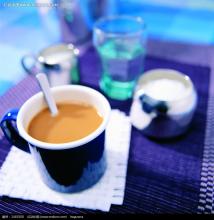Is there no grading standard for Yunnan coffee beans?-Yunnan Coffee saipincoffee
Is there no grading standard for Yunnan coffee beans?-Yunnan Coffee saipincoffee
Generally speaking, in alpine areas, due to the cold climate and the slow growth rate of coffee, the density of raw beans is higher and the texture is harder, and the more mellow and aromatic the coffee is, and it has a supple sour taste; on the contrary, the density of raw beans is smaller and the texture is less hard, then the quality of coffee is worse, so there are also people who classify it as "hardness". This classification method can be divided into the following categories: extremely hard beans, height of about 4500 to 5000 feet, referred to as SHB; high hard beans, height of about 3000cm 4500ft, referred to as GHB; hard beans, height of about 2000,000ft, referred to as HB; Pacific coastal area, height of about 984ft 3280ft, referred to as Pacific. Guatemala, Costa Rica, El Salvador, Mexico, Honduras and Haiti are all classified in this way.
This classification method is based on a variety of available screen classification, the screen has a variety of specifications, with a number to identify, the number is associated with the mesh. The size of the mesh is calculated in 1 stroke 64 inches. If the diameter of the mesh is 18 stroke 64 inches, the number of the mesh is 18; if the diameter of the mesh is 17 stroke 64 inches, the number of the mesh is 17; and so on, there are various numbered screens, such as 14, 15, 16, 19 and so on.
The process of screening is to put the coffee beans on the sieve, and after shaking them back and forth by hand or machine, the beans smaller than the sieve will fall and be removed; the beans that have been rejected will be screened out again through a smaller sieve and screened layer by layer, and the coffee beans will be sorted out.
After grading, the production area is divided into AA,A,B,C and PB series. AA is the highest level, while A-grade B-score C decreases successively, and those below C level are usually used as feed chat or fertilizer. In addition, round beans (Pea-Berry) have a special flavor, and the beans themselves are relatively small, so they have their own grade, that is, [PB], which is usually more expensive. In addition, we can also see the grades Y2 and T of XMagol Y1Magol. These coffee beans are of different sizes and have a lot of defective beans, so they are quite bad products and are not worth a try.
This classification is generally used in Kenya, New Guinea, Puerto Rico, Zimbabwe, Tanzania and Uganda. In addition, many Brazilian coffees are graded in this way, but they directly use 191,18,17,18,18,17. Instead of using AA,A,B,C and so on.

Important Notice :
前街咖啡 FrontStreet Coffee has moved to new addredd:
FrontStreet Coffee Address: 315,Donghua East Road,GuangZhou
Tel:020 38364473
- Prev

Introduction to the Origin of Red Honey Flavor of Costa Rican Coffee beans
Costa Rican coffee beans Red Honey Flavor Water temperature Red bourbon Yellow Honey Variety Origin introduction Coffee trees planted in Costa Rica are all Arabica coffee trees have been improved so that the quality of coffee beans is better and more stable; in order to facilitate picking, coffee trees are maintained at a height of about 2 meters by continuous pruning; the coffee that people eat is the flavor released by the seeds in the fruit soaked in water. Pick
- Next

Rose Summer differential bidding Green bid Red bid Yellow Standard-Jade Manor bidding Rose Summer
In 1996, during the period of the lowest international coffee prices, seven coffee estates in Boquete and Volcan saw the dawn of the special coffee era. Organized and established the famous Panamanian Association of Special Coffees of Panama (SCAP) Panamanian boutique coffee association.
Related
- Detailed explanation of Jadeite planting Land in Panamanian Jadeite Manor introduction to the grading system of Jadeite competitive bidding, Red bid, Green bid and Rose Summer
- Story of Coffee planting in Brenka region of Costa Rica Stonehenge Manor anaerobic heavy honey treatment of flavor mouth
- What's on the barrel of Blue Mountain Coffee beans?
- Can American coffee also pull flowers? How to use hot American style to pull out a good-looking pattern?
- Can you make a cold extract with coffee beans? What is the right proportion for cold-extracted coffee formula?
- Indonesian PWN Gold Mandrine Coffee Origin Features Flavor How to Chong? Mandolin coffee is American.
- A brief introduction to the flavor characteristics of Brazilian yellow bourbon coffee beans
- What is the effect of different water quality on the flavor of cold-extracted coffee? What kind of water is best for brewing coffee?
- Why do you think of Rose Summer whenever you mention Panamanian coffee?
- Introduction to the characteristics of authentic blue mountain coffee bean producing areas? What is the CIB Coffee Authority in Jamaica?

